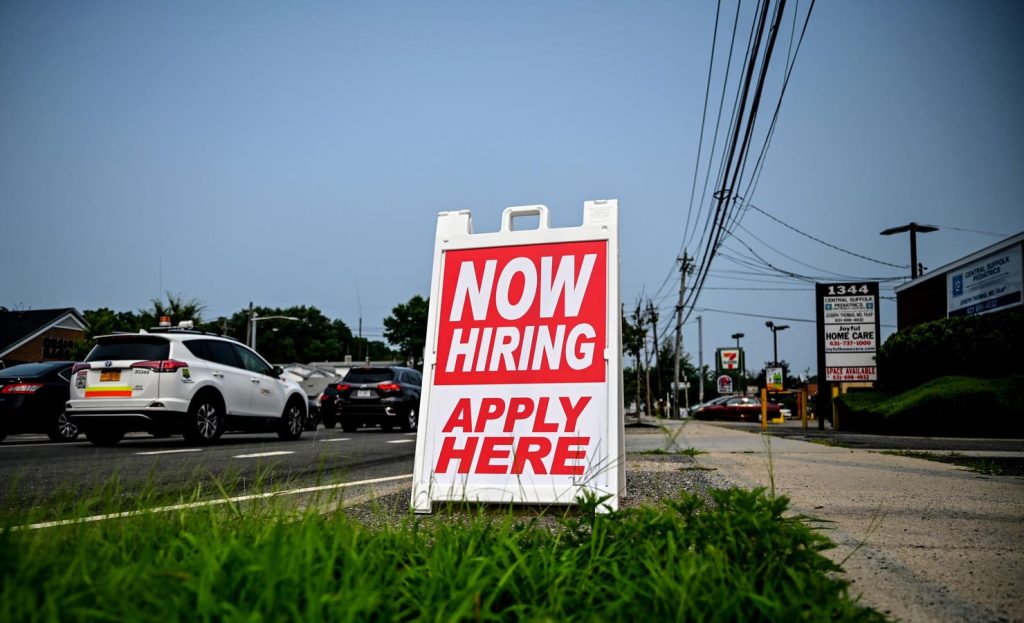The U.S. Job Market’s Unprecedented Revision: What It Means for America’s Economic Picture
In a stunning development that has sent ripples through economic circles, the Bureau of Labor Statistics (BLS) announced a massive downward revision of 911,000 jobs for the year ending March 2025 – the largest such correction in recorded history. This dramatic rewrite of America’s employment landscape comes at a particularly sensitive time, following last year’s already substantial downward adjustment of 818,000 jobs. To put this in perspective, before these back-to-back corrections, the previous record was set during the 2009 financial crisis with a downward revision of 902,000 jobs. These consecutive record-breaking corrections raise important questions about how we measure and understand the health of our economy, especially as Americans continue to navigate the post-pandemic employment landscape.
The timing of this massive revision has proven particularly contentious against the backdrop of political tensions surrounding the BLS itself. The agency has recently been at the center of controversy, with former commissioner Erika McEntarfer’s departure following a large revision earlier this year. President Trump’s accusations that the agency was manipulating data during the 2024 election and his subsequent appointment of Heritage Foundation economist E.J. Antoni to replace McEntarfer have only intensified scrutiny of the agency’s work. Democrats have condemned this appointment, adding another layer of political complexity to what should be straightforward economic reporting. This politicization of economic data collection comes at precisely the moment when Americans most need reliable information about the job market to make informed decisions about their careers, investments, and financial futures.
At the heart of these massive revisions lies a fundamental challenge in how we count American jobs. The monthly nonfarm payroll numbers aren’t an actual census of every worker but rather a survey of employers that gets adjusted to capture segments of the labor market the survey might miss. The system’s Achilles’ heel has proven to be new businesses – those enterprises that spring up or shut down between reporting periods. To address this gap, the BLS relies on what’s called the “birth-death model,” introduced in 2003, which uses historical patterns to estimate how many new businesses are likely opening or closing each month. This model typically functions effectively during normal economic periods but has struggled to accurately reflect the unprecedented changes in business formation patterns following the COVID-19 pandemic. For two consecutive years, this model appears to have misjudged the rapidly evolving business landscape, resulting in these historic revisions that affect how we understand our economic trajectory.
What makes the current situation so exceptional is the dramatic surge in new business formation since the pandemic began. Before 2020, Americans consistently filed approximately 300,000 new business applications monthly – a figure that remained relatively stable for years. However, since the pandemic disrupted traditional work arrangements, this number has skyrocketed to more than 400,000 applications monthly, with some months registering even higher figures. This entrepreneurial explosion reflects profound shifts in how Americans approach work: more people want the flexibility of working from home, there’s increased willingness to venture into entrepreneurship, and new technologies, including artificial intelligence, have lowered barriers to starting businesses. Heather Long, chief economist at Navy Federal Credit Union, directly attributed the record change in job numbers to this unprecedented surge in new business formations, highlighting how fundamental shifts in working patterns are reshaping our economic indicators.
The technical explanation for these massive revisions reveals the challenges in accurately measuring a rapidly evolving economy. Goldman Sachs economists noted that the monthly adjustments made to payroll numbers based on the birth-death model were “probably too generous in second half of 2024.” This suggests the model anticipated either that these new businesses weren’t failing as quickly as they actually were, or that they were adding jobs at historical rates when the reality proved different. Each year, the BLS performs what’s known as a benchmark revision, reconciling monthly estimates with actual employment records filed by employers for unemployment insurance purposes. Typically, these revisions are minimal—mere fractions of a percentage point. However, the recent revisions have been, in relative terms, enormous, revealing that the BLS has not yet successfully adjusted its models to account for the fundamental shifts in business creation and sustainability patterns that emerged following the pandemic.
The larger question these revisions raise concerns the future sustainability of this entrepreneurial boom. While the surge in new business formation represents American innovation and adaptability, the record downward revisions in job numbers suggest many of these ventures may not be thriving as hoped. The very factors making it easier to start businesses—lower barriers to entry, cheaper tools, and reduced costs of experimentation—may also contribute to higher failure rates as people pursue dreams they might not have risked in pre-pandemic times. What remains indisputable is that the birth-death model, which served economic measurements well for nearly two decades, is no longer capturing the employment picture with its former accuracy. As policymakers, businesses, and workers navigate this changed landscape, developing more responsive measurement tools becomes crucial for understanding the true health of America’s job market. Until then, we may need to approach even official employment figures with a new level of caution, recognizing they represent our best estimate of a rapidly changing reality rather than an immutable economic truth.


